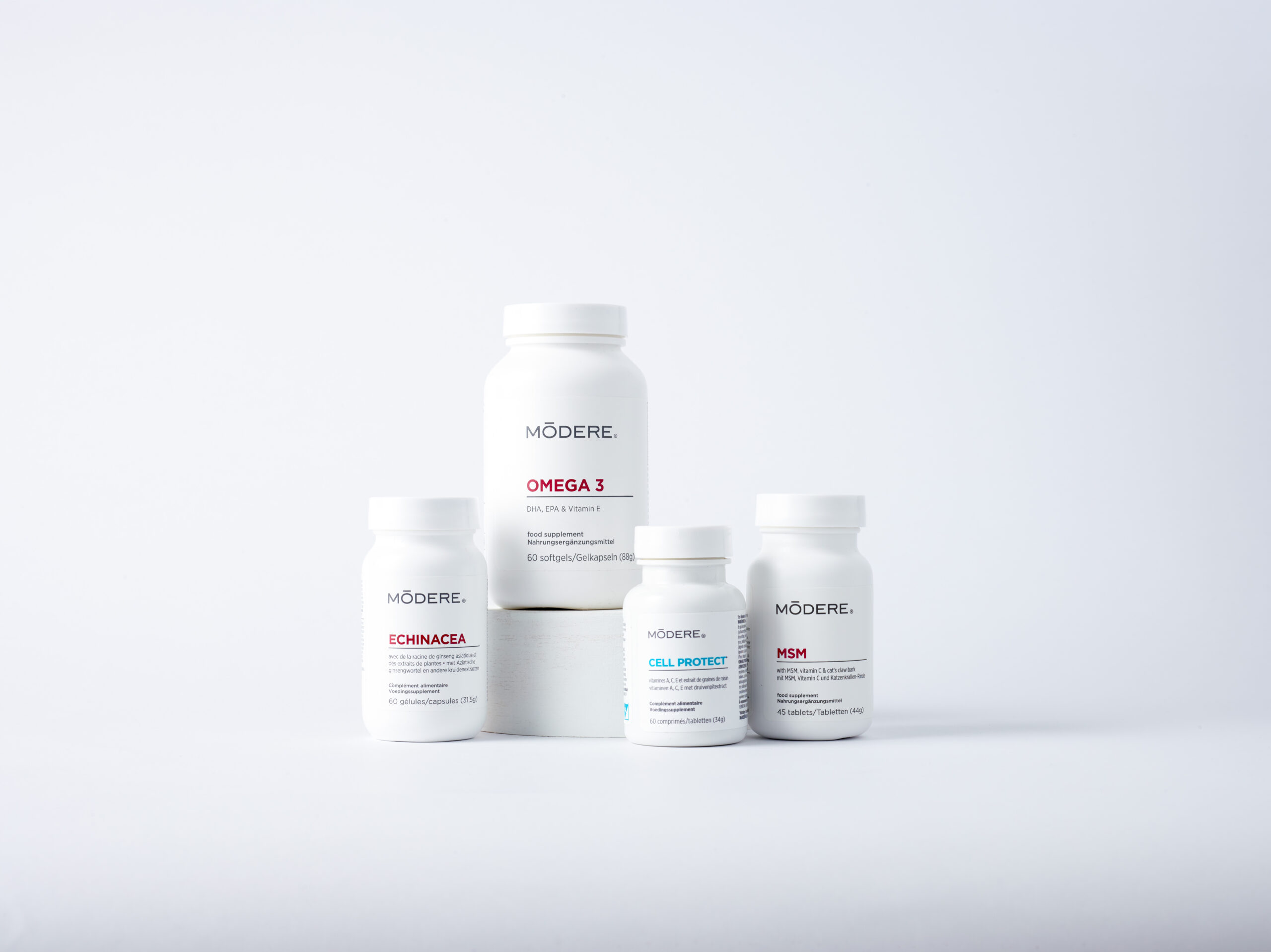When setting resolutions for a new year, it’s common to start thinking about getting in shape or starting healthy habits during a period of resetting your goals. However, rather than falling into the trap of crash diets and quick fixes, a focus on eating well and cultivating healthy habits that last throughout the year can have more rewarding, long term effects. In this blog, we’ll explore the science of forming good habits, the importance of choosing nutritious foods, the right way to cleanse, the power of thermogenic ingredients, and how to build healthy habits for year-round success.
Part 1: The Science of Forming Good Habits
The science behind transforming positive behaviours into a recurring pattern of good habits lies in the brain’s ability to rewire itself through neuroplasticity. When we repeatedly perform a specific action, neural pathways associated with that behaviour become stronger, making it easier to repeat the behaviour in the future. This is how habits are created, and you can use this science to your advantage.
So to form good habits, start with the following:
- Goal Setting: Setting clear and realistic goals helps provide direction and motivation. Break down larger goals into smaller, achievable steps to maintain progress and celebrate achievements along the way.
- Consistency: Consistent repetition of desired behaviours reinforces the neural pathways, making the habits more automatic over time.
- Accountability: Engaging in habits with the support of others, like friends or a fitness community, can increase motivation and provide a sense of responsibility.
- Positive Reinforcement: Celebrating small successes and rewarding yourself for sticking to good habits can reinforce positive behaviours and make the habit-forming process more enjoyable.
- Mindfulness: Being mindful of our actions, emotions, and triggers can help identify patterns and make better choices aligned with our health and fitness goals.
Part 2: Sustainable Weight Management
Quick fixes and extreme diets may lead to rapid weight loss, but such approaches are often unsustainable and can negatively impact health.
Sustainable weight management strategies include:
- Balanced Nutrition: Prioritise nutrient-dense foods, including vegetables, fruits, whole grains, lean proteins, and healthy fats. Avoid restrictive diets and focus on moderation.
- Portion Control: Pay attention to portion sizes to avoid overeating, and eat mindfully, savouring each bite.
- Regular Exercise: Engage in a mix of cardiovascular exercises, strength training, and flexibility workouts. Find physical activities that you enjoy to stay motivated and consistent.
- Hydration: Drink an adequate amount of water daily to support metabolism, digestion, and overall health.
- Patience and Persistence: Understand that sustainable weight loss takes time and dedication. Aim for slow, steady progress rather than rapid, unsustainable results.
Part 3: The Science of Cleansing
Cleansing is a crucial process that the body undergoes to eliminate harmful substances and waste products. It plays a vital role in maintaining optimal health and supporting various bodily functions. While the body has natural cleansing systems, incorporating certain ingredients and nutrients into your routine can further enhance this process.
Cleansing primarily occurs in the liver, where toxins and waste products are metabolised and prepared for excretion. These harmful substances can come from various sources, such as environmental pollutants, processed foods, and medications. The liver’s cleansing pathways involve two phases.
During phase I of cleansing, there are enzymes called cytochrome P450s that break down toxins into intermediate substances. These intermediate substances are chemical compounds formed as part of the cleansing process. While this is an essential step in converting harmful toxins into forms that the body can eventually eliminate, some intermediate substances can be more harmful or reactive than the original toxins themselves.
Thankfully, this is where phase II of cleansing comes into play. In this phase, the body further processes these intermediate substances through conjugation, which involves binding them with specific molecules. This transformation makes the intermediate substances less harmful and more water-soluble. When substances are water-soluble, it becomes easier for the body to get rid of them through processes like urine or sweat, allowing for their safe elimination from the body.
By undergoing Phase I and Phase II cleansing, the body can efficiently neutralise and eliminate harmful toxins, protecting its tissues and organs and promoting overall health and well-being. Understanding the role of intermediate substances in the cleansing process sheds light on how the body effectively deals with toxins to keep you healthy and functioning optimally.
Effective cleansing is essential for various reasons. Firstly, it promotes improved digestive health, ensuring a healthy gastrointestinal tract and regular bowel movements. Secondly, it enhances liver function, enabling the efficient filtering of harmful substances from the bloodstream, thus supporting overall health. Thirdly, cleansing provides valuable support to the immune system by reducing the body’s toxic burden, enhancing its ability to fight infections and diseases. Additionally, eliminating toxins allows the body to allocate more energy to vital functions, increasing energy levels and vitality. Lastly, cleansing plays a role in healthy weight management by aiding in the removal of waste products and excess hormones, potentially supporting weight loss efforts. Embracing detoxification as part of your lifestyle can have a significant positive impact on your overall well-being.
Here are some incredible nutrients and cleansing powerhouses to incorporate into your daily routine:
- Aloe Vera: Aloe vera gel and aloe vera polysaccharides supports digestive health and help to contribute to the maintenance of a normal immune system. Aloe also helps to hydrate the body using naturally occurring electrolytes.
- Psyllium Seed Husk: Psyllium seed husk contributes to intestinal transit and intestinal function and also helps to maintain a healthy bowel.
- Milk Thistle: Milk Thistle Seed Extract contributes to normal liver function. The seed is most commonly used as a source of silymarin, which is a complex mixture of polyphenolic molecules.
- Dandelion Root: Dandelion Leaf & Root Extract helps to support normal digestion.
- Cruciferous Vegetables: Vegetables like broccoli, cauliflower, cabbage, and Brussels sprouts contain compounds that support phase II cleansing pathways, assisting in the elimination of harmful substances.
- Vitamin C: This potent antioxidant helps neutralise free radicals and supports the liver’s detoxification processes.
- Fibre: Adequate dietary fibre intake supports regular bowel movements, aiding in eliminating waste and toxins.
Incorporating these cleansing ingredients and nutrients into your diet can actively support your body’s natural cleansing processes and promote overall well-being.
Remember, cleansing is a continuous journey that thrives in harmony with a balanced and healthy lifestyle!
You’ll find many of these nutrients in our Nutritionals range which you can shop on our website here!
Part 4: The Power of Thermogenic Ingredients
Thermogenic ingredients offer a natural way to enhance weight management efforts by increasing metabolism and promoting the burning of calories and body fat for fuel. By incorporating these ingredients into your routine, you can support your weight management goals and enjoy the benefits of increased energy expenditure and improved fat metabolism.
Below are several thermogenic ingredients and the effects they can have on your body:
- Citrus Extracts: Derived from citrus fruits like oranges and lemons, these extracts contain bioactive compounds such as flavonoids and polyphenols. These compounds have been shown to support fat metabolism, aiding in the breakdown of stored body fat.
- Guarana Extract: Obtained from the seeds of the guarana plant, this natural ingredient contains caffeine along with other bioactive compounds. Guarana seed contributes to normal fat metabolism and weight control.
- Caffeine: Widely known for its stimulating effects, caffeine is found in various plant sources, including Coffea robusta (coffee), green tea, and tea leaves. As a natural thermogenic, caffeine stimulates the central nervous system, increasing heart rate and metabolic rate. It also promotes concentration and alertness.
- Green Tea Extract: Green tea, also known as Camellia Sinensis, contains catechins, particularly epigallocatechin gallate (EGCG) which supports resting metabolic rate and energy expenditure.
By incorporating these thermogenic ingredients into your routine, you can support your weight management efforts and experience increased calorie burning and fat loss. However, remember that thermogenic supplements are not a substitute for a balanced diet and regular exercise. Instead, they should complement a comprehensive approach to sustainable weight loss and overall well-being.
You’ll also find many of these ingredients in our Modere product range! Pick up your essentials to a healthy life here!
Achieving sustainable weight management and healthy eating habits require forming good habits, embracing a balanced detoxification approach, and incorporating thermogenic ingredients into your routine. By focusing on building healthy habits year-round and making informed choices about detoxification and thermogenic ingredients, you can achieve your year round goals while enjoying improved overall well-being. Remember that weight management is a journey, and by taking a holistic approach to your health, you can set yourself up for success and a happier, healthier life.
To learn more about body composition:
Why Weight Loss Shouldn’t Be Your Goal
As always, consult with healthcare professionals or registered dietitian to ensure any dietary changes or supplements align with your individual health needs and goals.











